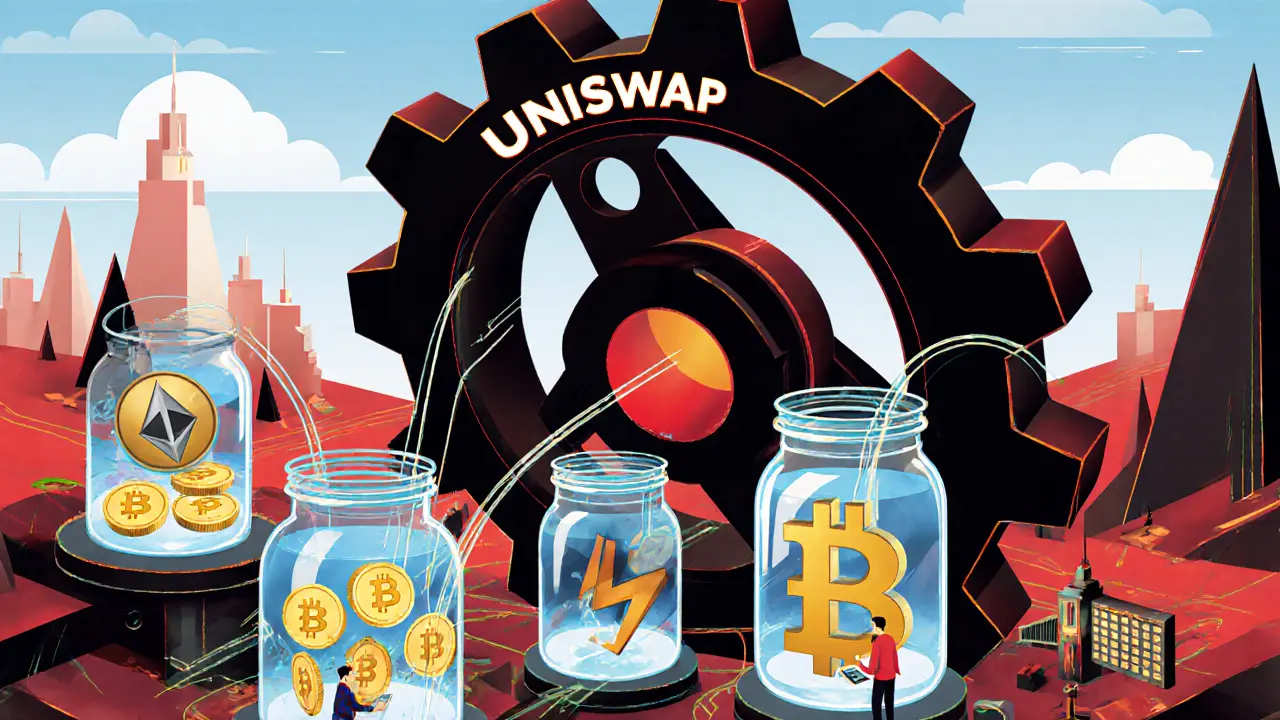
Uniswap is the largest decentralized exchange for swapping crypto tokens without intermediaries. The UNI token lets users vote on protocol changes. Learn how it works, its risks, and why it dominates DeFi.
When you trade crypto without a middleman, you’re likely using Uniswap, a decentralized exchange built on Ethereum that lets users swap tokens directly from their wallets. Also known as an automated market maker (AMM), it changed how people interact with crypto by removing order books and central control. Unlike traditional exchanges, Uniswap doesn’t hold your money. You connect your wallet—like MetaMask or Coinbase Wallet—and trade directly using smart contracts. That means no KYC, no account freezes, and no CEO deciding what you can buy. It’s open to anyone with internet and a little ETH for gas.
Uniswap’s real innovation isn’t just trading—it’s the AMM, a system that uses math instead of buyers and sellers to set prices. Also known as liquidity pools, these are funds contributed by everyday users like you. You deposit two tokens (like ETH and USDC) into a pool, and the system automatically balances them to keep prices stable. In return, you earn a share of trading fees. This model works because it’s simple, transparent, and doesn’t rely on market makers. But it’s not perfect: slippage, impermanent loss, and high gas fees during peak times can hurt returns. Still, it’s the reason DeFi exploded. And because it’s open-source, anyone can copy it. That’s why you see clones on Solana, Polygon, and even Bitcoin sidechains. But Uniswap remains the original—and still the most trusted.
Uniswap doesn’t just trade tokens. It’s the backbone of DeFi. Most new coins launch on Uniswap first. Most yield farms, staking pools, and lending protocols connect to it. It’s where early adopters test new projects, and where scams also hide in plain sight. That’s why the posts below cover everything from Uniswap alternatives like Balancer V2 on Gnosis Chain, to how DeFi exchanges like Karura Swap and BarterDEX compare. You’ll also find deep dives into how liquidity pools work, what happens when gas spikes, and why some traders are moving to newer AMMs that cut fees and improve speed. Some posts even warn about fake tokens listed on Uniswap that look real but have zero value—like Based Peaches or Big Dog. This isn’t just a guide to trading. It’s a survival toolkit for navigating the wild west of decentralized finance.

Uniswap is the largest decentralized exchange for swapping crypto tokens without intermediaries. The UNI token lets users vote on protocol changes. Learn how it works, its risks, and why it dominates DeFi.